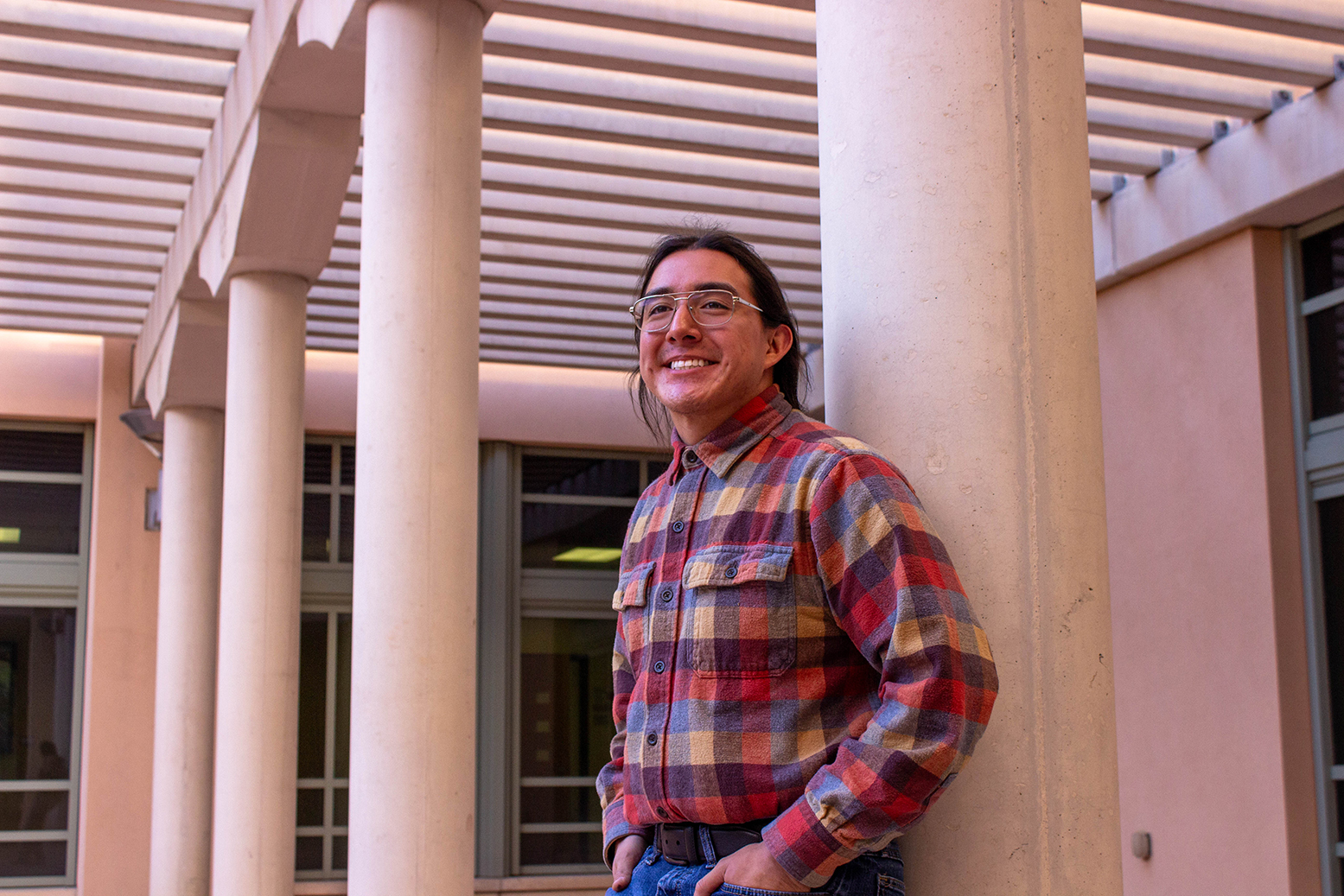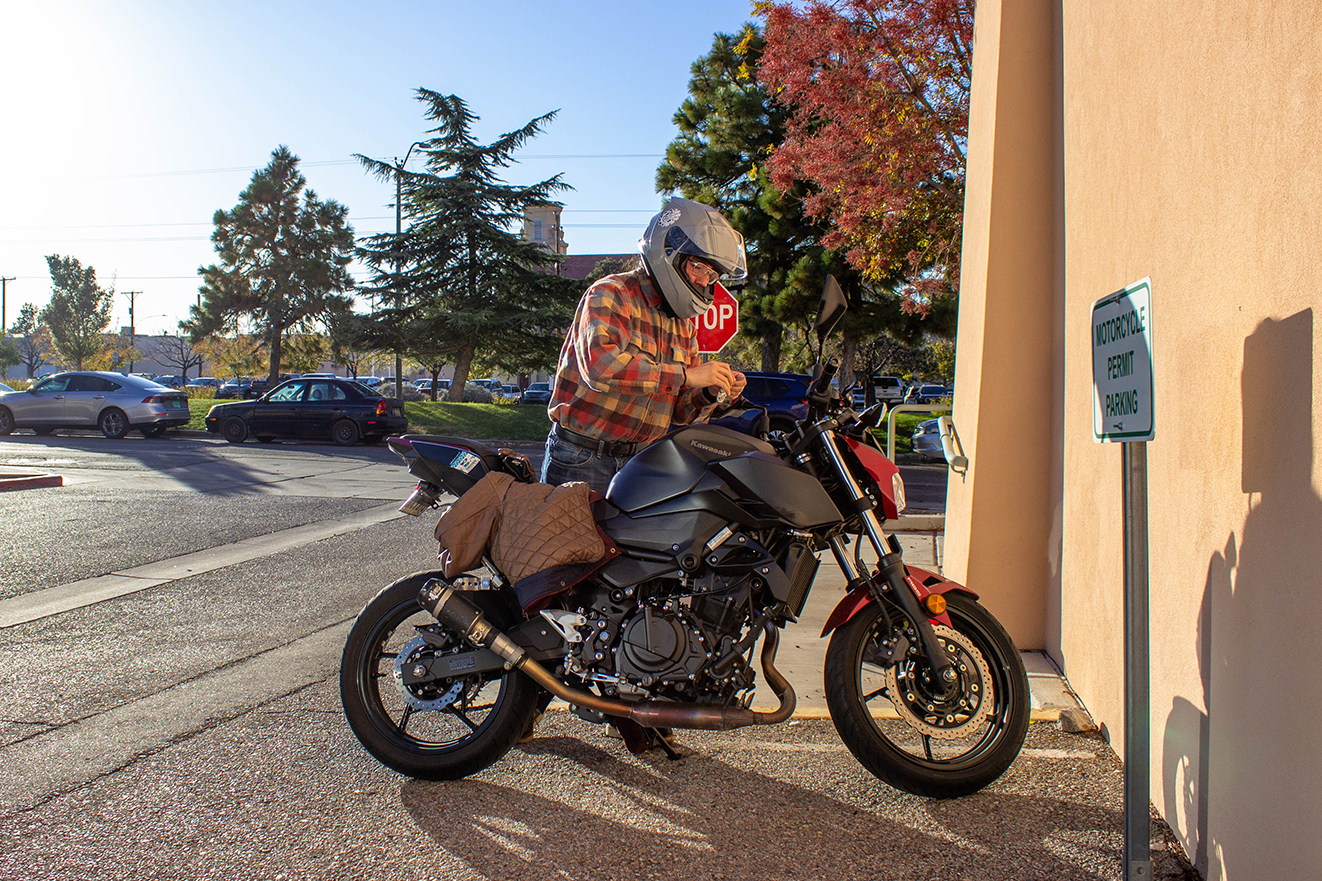Construction Management student finds passion for transportation and connection at UNM
November 26, 2024 - By Carly Bowling
Born in Albuquerque, but raised in Missouri, Matthew Concho planned to finish high school, get a certificate in welding, and immediately join the workforce. Working at his father’s landscaping business showed him he likes using his hands and he doesn’t want to be stuck in an office all day, but a series of strange events would ultimately lead Concho down a different path.

Matthew Concho
During his senior year of high school, the cross-country runner developed a heart condition. He could no longer compete in long-distance running, which he loved, and he had to stop running entirely. Then, an engine block issue caused his car to break down. Without the money to fix it, Concho was forced to get rid of it. Living in small-town Missouri, transportation options were limited, and it got him thinking about what little access there was and why. So, when a letter from The University of New Mexico arrived in the mail offering a competitive scholarship package that would give him in-state tuition, Concho decided he would move back to the city he was born in and pursue a degree in Construction Management.
The move to Albuquerque also offered Concho an opportunity to connect to his heritage in the Pueblos of Acoma, Laguna and Zuni. In Cape Girardeau, he had been one of the only Native Americans he knew of in town, which sometimes meant enduring offensive remarks and ill-informed questions.
“It was a struggle for a long time to view myself as Native and to explain Native issues when I had grown up as the only Native person in a predominantly white community. I had to build a cloak of sorts because people would look at me differently or stare at me,” Concho said.
After moving to New Mexico, he quickly got tapped into UNM’s American Indian Student Services and student organizations like American Indian Science and Engineering Society (AISES) and Kiva Club. At first, he was concerned he might not fit in with other Indigenous students because he had grown up so far outside of the community, but speaking with other students showed him he was far from alone.
Soon after starting at UNM, he got an internship with the First Nations Development Institute. Still without a car, Concho once again came face to face with the challenges of figuring out alternative modes of transit in a car-dependent society. How could he travel to work without a car? How could he afford a car without a job?
“It sucks to be poor and without a car, but I was lucky my job was on a bus line,” Concho said. “All of these challenges made me realize it comes down to how cities are built and designed.”
Now as a third-year student studying Construction Management in the School of Engineering, Concho has found particular interest in transportation systems and gets around town on his bike or motorcycle. He was excited to find a major that integrated his desire to work in the field with his interest in building better communities. Though he isn’t sure exactly what he wants to do after graduation, his participation on campus has helped give him some ideas.

Acting as the treasurer of UNM’s AISES chapter has provided him the opportunity to travel to the organization’s regional conference in Tucson where he was able to meet other Indigenous students in STEM and see how another city was designed. He and the group even toured the Biosphere 2 where Concho, well-acquainted with the subtropical climate of Missouri, watched some of his friends “experience real humidity for the first time.”
Within AISES, there are ongoing conversations about how to implement Indigenous values in the STEM fields.
“How do we not lose ourselves as Indigenous people? How do we keep our traditional values of community yet still be in STEM? What options are there for us to do that? That’s why places like the AISES National Conference are so nice,” Concho said.
Just last month, the chapter’s members attended the organization’s national conference in San Antonio. The event, sponsored by Google, NASA, and several other high-profile companies and labs, featured three days of events and career fairs all centered on Native American students in STEM.
“I got to experience new spaces and there were thousands of Natives in STEM, hundreds of speakers, hundreds of presenters, hundreds of companies there who want me as a Native in STEM. That is crazy to see,” Concho said. “Without AISES or without being at the School of Engineering, I never would have gone on those trips, and I feel like I’ve been more optimistic about where I can go because there are so many opportunities out there.”
It was organizations like the Michigan Department of Transportation and Amtrak –– which is Concho’s preferred means of transit back to Missouri–– that caught his eye the most. Long term, he hopes to positively impact rural and tribal transportation systems, with the knowledge that transit can open the door to economic opportunities and closer-knit communities. Concho’s courses and interactions with faculty have further invigorated his interests. Faculty in the Gerald May Department of Civil, Construction and Environmental Engineering who specialize in the investigation of resilient transportation systems and public health, like Assistant Professor Lisa Losada Rojas and Assistant Professor Carlos Rivera Gonzalez, have made him eager to get involved with research.
“It’s so cool to see their work at the School of Engineering and its emphasis on the things that are important to me,” he said. “Their talking about how city design can be different, and [Rivera Gonzalez] brings so much passion to me about transportation’s future in America.”
In Concho’s eyes, car-dependent cities can be huge barriers to low-income people and walkable, bikeable cities encourage better health. He would ultimately like to see Indigenous communities more connected to other parts of the country, whether through transit options or city design.
“The distance creates further separation. It can even be racial at times, that kind of distance, because a lot of people don’t know that Native Americans still exist in plenty of parts of the country,” Concho said.
In his opinion, drawing people together physically might help draw them closer politically and emotionally.
“Our society is so polarized because we dehumanize each other,” he said. “Maybe we can prevent that and see each other as human, by seeing each other in your neighborhood, walking beside each other, and talking to one another.”
